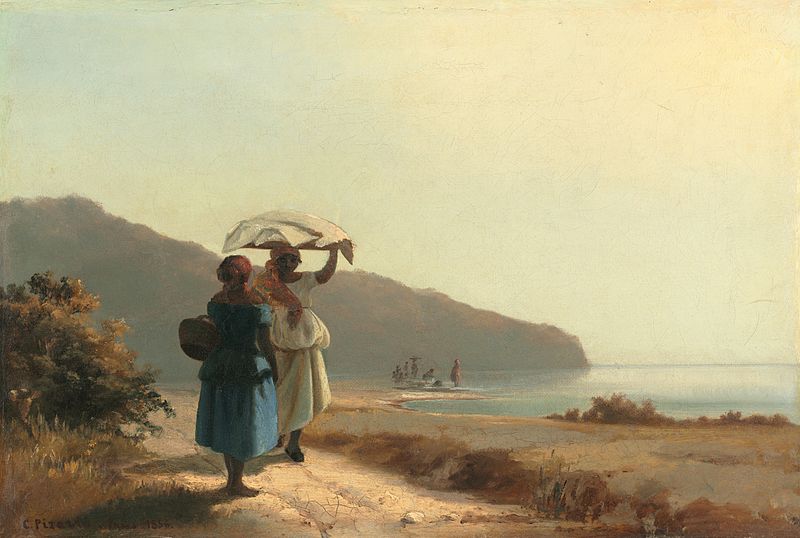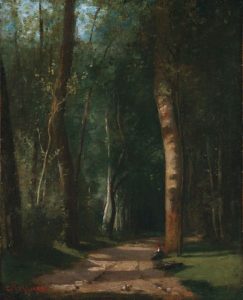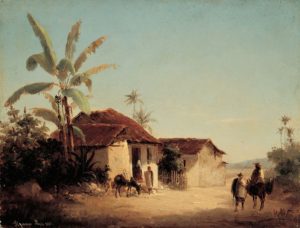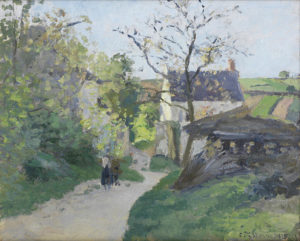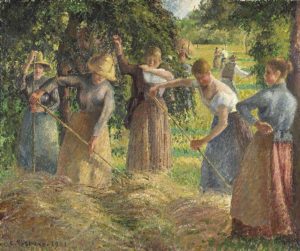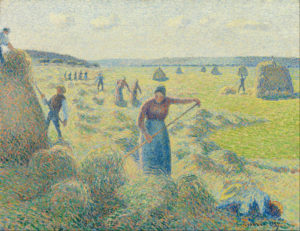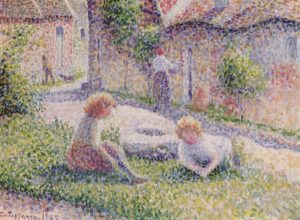Camille Pissarro was born on July 10, 1830 in the Danish West Indies (what is now the Virgin Islands). He was a Danish-French Impressionist and Neo-Impressionist. He worked with Georges Seurat and Paul Signac–and his success and skill level can be deduced from the hints of the company he kept.
Pissarro was instrumental in establishing a society for aspiring artists, and he had a tremendous influence on the youngsters. Not only was he a skilled artist, but he stood as a role model of wisdom and warmth. He was said to have a sense of dignity and sincerity about him which was reflected in his artwork. Cezanne said of him, “He was a father for me. A man to consult and a little like the good Lord.”^1 And Mary Cassatt said that he was “such a teacher that he could have taught the stones to draw correctly.”^2 He liked to paint people and places as they were–not glorifying them, but bringing out their own inherent beauty.
Pissarro was friends with many important artists, including Renoir, Monet, and Cezanne. (Yes, if you’ve been keeping up with this blog, you may have noticed that all the great impressionists seem to have been in cahoots with each other.) He married his mother’s maid and had seven children.
Below are shown Went Into a Forest; Landscape with Farmhouses and Palm Trees;
The Great Walnut Tree, the ‘Rondesr House’, Pontoise; Hay Harvest at Éragny;
La Récolte des Foins, Eragny; and Children on a Farm.
^1 The Great Masters, Quantum Books (2004) pp. 279–319
^2 Ibid.
